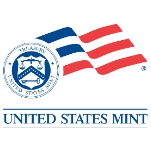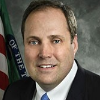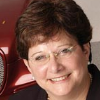The US Mint is also responsible for extensive commercial marketing programs to sell products, such as special coin sets for collectors, national medals, American Eagle gold, silver and platinum bullion coins, and commemorative coins marking national events such as the Bicentennial. The Mint does not produce paper money; that is handled by the Bureau of Engraving and Printing.
|
Afinsa Bienes Tangibles, SA
|
$1,465,826,289
|
|
Poongsan Corporation
|
$1,089,250,498
|
|
Olin Corporation
|
$690,130,989
|
|
Sunshine Minting, Inc.
|
$613,543,197
|
|
Mitsui & Co., Ltd.
|
$411,420,034
|
|
Jarden Zinc Products, Inc.
|
$362,274,252
|
|
Mitsubishi Corporation
|
$278,873,030
|
|
Olin Corporation
|
$195,895,760
|
|
International Business Machines Corporation
|
$128,655,237
|
|
Actuaciones Inmobiliarias La Solana SL
|
$109,300,000
|
provides ores and minerals and is the world’s third largest collectibles company, after Sotheby’s and Christie’s. It is headquartered in Madrid and has offices in many other cities, including in Santa Monica, California. In May 2006, police in Spain made several arrests, closed business offices and confiscated material in connection with a case of suspected fraud affecting the life savings of over 350,000 private investors. Four Afinsa employees were arrested, including the company’s founder and his son.
Mint chief: No tolerance for sexual harassment
(by Anne C. Mulkern, Denver Post)
Penny Dreadful: They’re horrid and useless. Why do pennies persist?
(by David Owen, New Yorker)
- Table of Contents
- Overview
- History
- What it Does
- Where Does the Money Go
- Controversies
- Suggested Reforms
- Comments
- Leave a comment


From January 12, 2015, until the day of the inauguration of Donald Trump, Matthew Rhett Jeppson ran the U.S. Mint, despite the Senate’s failure to act on his nomination as Mint director. Located in the Treasury Department, the Mint is responsible for minting U.S. coins (but not printing currency). The Mint director’s post has been vacant since January 2011, when Edmund Moy left. Although President Barack Obama nominated auto executive Bibiana Boerio to the job in 2012, her nomination died in committee. Jeppson himself was nominated to be Mint director in July 2015 and made it as far as a hearing before the Senate Committee on Banking, Housing and Urban Affairs eight months later, but he was never confirmed, despite being a lifelong Republican.
Born in Midvale, Utah, circa 1965 to E. Mark and Orma Jean Jeppson, Matthew Rhett Jeppson was the only boy out of four children. After the family moved to Florida when Rhett was 16, he earned a B.A. in History at the University of Florida in 1987.
Jeppson joined the Marine Corps in 1988, where he served as principal battalion staff officer, 81mm Mortar Platoon commander, Rifle Company executive officer, and Rifle Platoon commander in the 1st Marine Division from 1989 to 1991. During the 1990 Gulf War, he led Marines into combat in Kuwait.
Jeppson had to take a step back from the Corps from 1992 to 1994, in order to run his father’s small construction business during a serious illness.
Returning to duty, Jeppson served as operations and exercise officer at Special Operations Command Central from 1995 to 1999.
Jeppson also worked for the State of Florida. He was director of state purchasing and special assistant to the secretary at the Department of Business and Professional Regulation of the State of Florida from 1999 to 2003.
Jeppson’s later Marine Corp service included stints as counter-terrorism planner and chief of current operations for Marine Forces Europe from 2001 to 2003; chief of joint national training capability and European engagements lead at the United States Special Operations Command from 2004 to 2008; deputy director of operations for U.S. Forces Afghanistan from 2009 to 2010; and lead crisis response planner at U.S. European Command from 2010 to 2012. In January 2016, Jeppson retired from the Marine Corps with nearly 28 years active and reserve service.
Jeppson joined the Small Business Administration (SBA) in 2012, serving as associate administrator in the Office of Veterans Business Development from 2012 to 2015, and as acting chief operating officer from 2014 to 2015.
Starting in January 2015, he served in the newly created position of principal deputy director of the Mint.
Rhett Jeppson is married to Renee Jeppson, with whom he has four children: Holly, Heidi, Hayden, and Hans.
-Matt Bewig
To Learn More:
Utah Artist Tapped for Design as US Mint Celebrates its 225th Anniversary (by Carter Williams, KSL-TV)
Statement Before the Senate Committee on Banking, Housing, and Urban Affairs (pdf)
White House Announces Intention to Nominate Jeppson as Mint Director (by Paul Gilkes, Coin World)

A former auto executive with a background in design has been nominated by President Obama to be the next director of the United States Mint, an agency of the Treasury Department. If confirmed by the Senate—which is unlikely to act before December—Bibiana Boerio would succeed Edmund Moy, who left the post in December 2010. Since Moy’s resignation, Deputy Director Richard A. Peterson has shouldered the responsibilities of the director.
Born circa 1954 in Latrobe, Pennsylvania, Boerio graduated in 1971 from Greensburg Central Catholic High School in Greensburg, Pennsylvania. She earned a BS (Hons) in Textiles and Design at Seton Hill College in 1975 and an MBA in Accounting and Finance at the University of Pittsburgh Graduate School of Business in 1976.
Joining Ford Motor Company after graduating with her MBA, Boerio held a number of finance positions in the areas of product development, manufacturing, sales and corporate business planning, from 1976 to 1995. From August 1995 to September 2000, she served as the finance director for Jaguar Cars, Ltd., then a subsidiary of Ford. She also launched and served as the chair of Jaguar’s Women’s Product and Marketing Committee. Leaving Jaguar in 2000, Boerio worked as executive vice president, chief financial officer and treasurer of Ford Motor Credit Co., LLC, from October 2000 to March 2003, and as director of finance and strategy for Ford Motor Company International Operations from 2003 to 2004. She returned to Jaguar in July 2004 to work as managing director, leaving for good in December 2007, when Ford was in the process of selling its interest in the British car maker to Tata Motors, which is based in Mumbai, India.
Retiring from Ford, Boerio transferred to the political realm, serving as chief of staff for Congressman Joe Sestak (D-Pennsylvania) from February 2008 to January 2011. After Sestak left the House of Representatives in order to run, unsuccessfuly, for the Senate, Boerio was a special adviser to the Sandy Baruah, the president chief executive of the Detroit Regional Chamber of Commerce from March 2011 to February 2012, with an emphasis on developing the MICHauto association in support of the auto industry.
She served as a member of the board of directors for Vista Maria, a non-profit organization supporting high-risk girls in Dearborn, Michigan, and has served as the chair of the Coventry Business Group in support of the National Society for the Prevention of Cruelty to Children in the United Kingdom.
A Democrat, Boerio has contributed $9,000 to Democratic candidates and committees since 2002, including $3,250 to the Democratic Congressional Campaign Committee, $1,000 to the Democratic National Committee, $500 to the Democratic Senatorial Campaign Committee, $2,000 to the 2006 Congressional campaign of former Admiral Joe Sestak, and $750 to the 2012 Wisconsin Senate campaign of Congresswoman Tammy Baldwin.
-Matt Bewig
Biography (Bloomberg Business Week)
- Latest News
- D.C. Public Schools will Teach all Second-Graders to Ride a Bike
- New Rule in Germany Limits Sales of Sex-Themed E-Books to 10pm to 6am
- What Happened to the 6-Year-Old Tibetan Boy the Chinese Government Kidnapped 20 Years Ago?
- U.S. Ambassador to Turkey Photoshops his Hair Color to Mock Turkish Mayor
- Mystery Artist Calls Attention to Unfixed Potholes by Drawing Penises around Them
The US Mint is also responsible for extensive commercial marketing programs to sell products, such as special coin sets for collectors, national medals, American Eagle gold, silver and platinum bullion coins, and commemorative coins marking national events such as the Bicentennial. The Mint does not produce paper money; that is handled by the Bureau of Engraving and Printing.
|
Afinsa Bienes Tangibles, SA
|
$1,465,826,289
|
|
Poongsan Corporation
|
$1,089,250,498
|
|
Olin Corporation
|
$690,130,989
|
|
Sunshine Minting, Inc.
|
$613,543,197
|
|
Mitsui & Co., Ltd.
|
$411,420,034
|
|
Jarden Zinc Products, Inc.
|
$362,274,252
|
|
Mitsubishi Corporation
|
$278,873,030
|
|
Olin Corporation
|
$195,895,760
|
|
International Business Machines Corporation
|
$128,655,237
|
|
Actuaciones Inmobiliarias La Solana SL
|
$109,300,000
|
provides ores and minerals and is the world’s third largest collectibles company, after Sotheby’s and Christie’s. It is headquartered in Madrid and has offices in many other cities, including in Santa Monica, California. In May 2006, police in Spain made several arrests, closed business offices and confiscated material in connection with a case of suspected fraud affecting the life savings of over 350,000 private investors. Four Afinsa employees were arrested, including the company’s founder and his son.
Mint chief: No tolerance for sexual harassment
(by Anne C. Mulkern, Denver Post)
Penny Dreadful: They’re horrid and useless. Why do pennies persist?
(by David Owen, New Yorker)
Comments


From January 12, 2015, until the day of the inauguration of Donald Trump, Matthew Rhett Jeppson ran the U.S. Mint, despite the Senate’s failure to act on his nomination as Mint director. Located in the Treasury Department, the Mint is responsible for minting U.S. coins (but not printing currency). The Mint director’s post has been vacant since January 2011, when Edmund Moy left. Although President Barack Obama nominated auto executive Bibiana Boerio to the job in 2012, her nomination died in committee. Jeppson himself was nominated to be Mint director in July 2015 and made it as far as a hearing before the Senate Committee on Banking, Housing and Urban Affairs eight months later, but he was never confirmed, despite being a lifelong Republican.
Born in Midvale, Utah, circa 1965 to E. Mark and Orma Jean Jeppson, Matthew Rhett Jeppson was the only boy out of four children. After the family moved to Florida when Rhett was 16, he earned a B.A. in History at the University of Florida in 1987.
Jeppson joined the Marine Corps in 1988, where he served as principal battalion staff officer, 81mm Mortar Platoon commander, Rifle Company executive officer, and Rifle Platoon commander in the 1st Marine Division from 1989 to 1991. During the 1990 Gulf War, he led Marines into combat in Kuwait.
Jeppson had to take a step back from the Corps from 1992 to 1994, in order to run his father’s small construction business during a serious illness.
Returning to duty, Jeppson served as operations and exercise officer at Special Operations Command Central from 1995 to 1999.
Jeppson also worked for the State of Florida. He was director of state purchasing and special assistant to the secretary at the Department of Business and Professional Regulation of the State of Florida from 1999 to 2003.
Jeppson’s later Marine Corp service included stints as counter-terrorism planner and chief of current operations for Marine Forces Europe from 2001 to 2003; chief of joint national training capability and European engagements lead at the United States Special Operations Command from 2004 to 2008; deputy director of operations for U.S. Forces Afghanistan from 2009 to 2010; and lead crisis response planner at U.S. European Command from 2010 to 2012. In January 2016, Jeppson retired from the Marine Corps with nearly 28 years active and reserve service.
Jeppson joined the Small Business Administration (SBA) in 2012, serving as associate administrator in the Office of Veterans Business Development from 2012 to 2015, and as acting chief operating officer from 2014 to 2015.
Starting in January 2015, he served in the newly created position of principal deputy director of the Mint.
Rhett Jeppson is married to Renee Jeppson, with whom he has four children: Holly, Heidi, Hayden, and Hans.
-Matt Bewig
To Learn More:
Utah Artist Tapped for Design as US Mint Celebrates its 225th Anniversary (by Carter Williams, KSL-TV)
Statement Before the Senate Committee on Banking, Housing, and Urban Affairs (pdf)
White House Announces Intention to Nominate Jeppson as Mint Director (by Paul Gilkes, Coin World)

A former auto executive with a background in design has been nominated by President Obama to be the next director of the United States Mint, an agency of the Treasury Department. If confirmed by the Senate—which is unlikely to act before December—Bibiana Boerio would succeed Edmund Moy, who left the post in December 2010. Since Moy’s resignation, Deputy Director Richard A. Peterson has shouldered the responsibilities of the director.
Born circa 1954 in Latrobe, Pennsylvania, Boerio graduated in 1971 from Greensburg Central Catholic High School in Greensburg, Pennsylvania. She earned a BS (Hons) in Textiles and Design at Seton Hill College in 1975 and an MBA in Accounting and Finance at the University of Pittsburgh Graduate School of Business in 1976.
Joining Ford Motor Company after graduating with her MBA, Boerio held a number of finance positions in the areas of product development, manufacturing, sales and corporate business planning, from 1976 to 1995. From August 1995 to September 2000, she served as the finance director for Jaguar Cars, Ltd., then a subsidiary of Ford. She also launched and served as the chair of Jaguar’s Women’s Product and Marketing Committee. Leaving Jaguar in 2000, Boerio worked as executive vice president, chief financial officer and treasurer of Ford Motor Credit Co., LLC, from October 2000 to March 2003, and as director of finance and strategy for Ford Motor Company International Operations from 2003 to 2004. She returned to Jaguar in July 2004 to work as managing director, leaving for good in December 2007, when Ford was in the process of selling its interest in the British car maker to Tata Motors, which is based in Mumbai, India.
Retiring from Ford, Boerio transferred to the political realm, serving as chief of staff for Congressman Joe Sestak (D-Pennsylvania) from February 2008 to January 2011. After Sestak left the House of Representatives in order to run, unsuccessfuly, for the Senate, Boerio was a special adviser to the Sandy Baruah, the president chief executive of the Detroit Regional Chamber of Commerce from March 2011 to February 2012, with an emphasis on developing the MICHauto association in support of the auto industry.
She served as a member of the board of directors for Vista Maria, a non-profit organization supporting high-risk girls in Dearborn, Michigan, and has served as the chair of the Coventry Business Group in support of the National Society for the Prevention of Cruelty to Children in the United Kingdom.
A Democrat, Boerio has contributed $9,000 to Democratic candidates and committees since 2002, including $3,250 to the Democratic Congressional Campaign Committee, $1,000 to the Democratic National Committee, $500 to the Democratic Senatorial Campaign Committee, $2,000 to the 2006 Congressional campaign of former Admiral Joe Sestak, and $750 to the 2012 Wisconsin Senate campaign of Congresswoman Tammy Baldwin.
-Matt Bewig
Biography (Bloomberg Business Week)
- Latest News
- D.C. Public Schools will Teach all Second-Graders to Ride a Bike
- New Rule in Germany Limits Sales of Sex-Themed E-Books to 10pm to 6am
- What Happened to the 6-Year-Old Tibetan Boy the Chinese Government Kidnapped 20 Years Ago?
- U.S. Ambassador to Turkey Photoshops his Hair Color to Mock Turkish Mayor
- Mystery Artist Calls Attention to Unfixed Potholes by Drawing Penises around Them





Comments